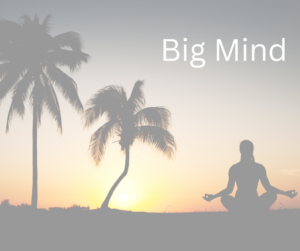Have you ever felt exhausted but couldn’t sleep? Maybe you need a midday recharge without napping. Non-Sleep Deep Rest (NSDR) is gaining popularity in wellness circles, offering the restorative effects of sleep without actually sleeping. NSDR, coined by Andrew Huberman, is a modern take on ancient practices like yoga nidra. It involves lying down, breath work, and guided imagery for profound rest.
Table of Contents:
- Understanding NSDR: More Than Just Relaxation
- The Science Behind NSDR
- The Benefits of NSDR
- How to Practice NSDR
- Who Can Benefit from NSDR?
- NSDR vs. Traditional Meditation
- Integrating NSDR into Your Daily Routine
- Potential Drawbacks and Considerations
- Conclusion
Understanding NSDR: More Than Just Relaxation
Rest often means lounging or scrolling through our phones. But, according to stress expert Dr. Elissa Epel, “Often when we think we’re resting, it’s not deep rest.” NSDR goes beyond surface relaxation to deep physiological rest.
You’re not fully asleep during NSDR, but not fully awake either. You enter a state where your body gains restorative benefits similar to sleep. Your brain waves slow, thoughts quiet, and stress hormones like cortisol decrease.
The Science Behind NSDR
Although the term NSDR is new, the principles have been studied for years. Research in publications like the International Journal of Yoga shows yoga nidra significantly impacts the nervous system and brain function. NSDR increases theta and delta waves, similar to deep sleep stages. This brain activity shift reduces stress, improves memory, and boosts creativity.
Neuroplasticity and Learning
NSDR potentially impacts neuroplasticity, the brain’s ability to make new connections. Dr. Huberman suggests NSDR enhances learning and memory. The relaxed focus helps consolidate new information. Practice yoga nidra to harness the potential benefits of improved sleep and deep relaxation.
The Benefits of NSDR
Potential NSDR benefits are numerous and research-backed. Some key advantages include stress reduction, improved sleep quality, and enhanced focus and creativity. This makes it an attractive practice for those seeking improved sleep.
Stress Reduction
Stress is a constant in today’s world. NSDR provides a reset for our stress response. A 2019 study revealed university students practicing yoga nidra (a form of NSDR) twice weekly for an hour experienced less stress and greater self-esteem after eight weeks. The students experienced an improvement in their ability to fall asleep quickly.
Improved Sleep Quality
NSDR complements and enhances sleep, although it doesn’t replace it. A 2022 study showed yoga nidra for two weeks improved total sleep duration and sleep efficiency. This regular practice had an overall positive impact on participants’ sleep quality.
Enhanced Focus and Creativity
NSDR clears mental fog and boosts cognitive function by resting the brain without sleeping. Practitioners report increased focus and creativity after sessions. NSDR protocol encourages deep relaxation, offering potential benefits similar to those of yogic sleep.
How to Practice NSDR
Ready to try NSDR? Here’s a simple guide:
- Find a quiet, comfortable, undisturbed space.
- Lie down or sit comfortably.
- Set a practice intention (optional).
- Follow a guided recording or try this:
- Take deep, slow breaths.
- Mentally scan your body, relaxing each part.
- Visualize a peaceful scene or use a positive affirmation.
- Relax deeply for 10-30 minutes.
- Gently return to your surroundings when ready.
NSDR Resources
Here are some resources to help you start:
| Resource Type | Description | Where to Find |
|---|---|---|
| Guided Audio | 10-minute NSDR Session | YouTube |
| Guided Video | 20-minute NSDR session | YouTube |
| App | Various guided sessions | Insight Timer, Calm, Headspace |
Who Can Benefit from NSDR?
NSDR benefits anyone seeking mental and physical well-being, not just those with sleep or stress issues. Consider exploring body scan meditation to achieve similar relaxation. The practice of body scan meditation may also be referred to as NSDR.
Here are some groups who may find it helpful:
- Busy professionals needing a midday recharge.
- Students wanting better learning and memory.
- Athletes desiring improved recovery and performance.
- Individuals coping with anxiety or stress.
- Anyone seeking better sleep.
NSDR vs. Traditional Meditation
NSDR and traditional meditation share similarities, but there are key differences. NSDR is more structured and guided, which makes it easier for those new to meditation. Explore guided meditation for relaxation and mindfulness to discover techniques.
It emphasizes deep relaxation and uses visualization. You can enjoy the potential benefits of yogic sleep and experience deep relaxation with NSDR.
The Role of Intention in NSDR
NSDR, especially yoga nidra, involves intention-setting (sankalpa in Sanskrit). Setting a positive intention at the start anchors the practice in your subconscious, enhancing its effects. Consider making yoga nidra a part of your routine.
Integrating NSDR into Your Daily Routine
NSDR is flexible. Practice it anytime:
- Morning: A 10-minute session sets a calm tone.
- Midday: Replace coffee with NSDR for a caffeine-free recharge.
- Evening: Practice before bed for restful sleep.
Consistency matters. Short, daily sessions provide significant, long-term benefits. Enjoy deep relaxation and enter deep rest with the NSDR technique.
Potential Drawbacks and Considerations
NSDR is generally safe. Some may fall asleep, which isn’t the goal. If this happens, try practicing at a different time or sitting up.
Those with certain mental health conditions should consult a healthcare provider before starting NSDR. Individuals with these conditions can discuss suitable relaxation techniques.
Conclusion
NSDR offers a unique rest and relaxation method, blending ancient wisdom with neuroscience. It offers deep rest without sleep, helping us recharge amidst busy lives. It can even contribute to deep rest.
Whether you seek stress reduction, better sleep, or enhanced cognitive function, NSDR could be your solution. Approach it with an open mind and give it time. Try NSDR and transform your daily life.


